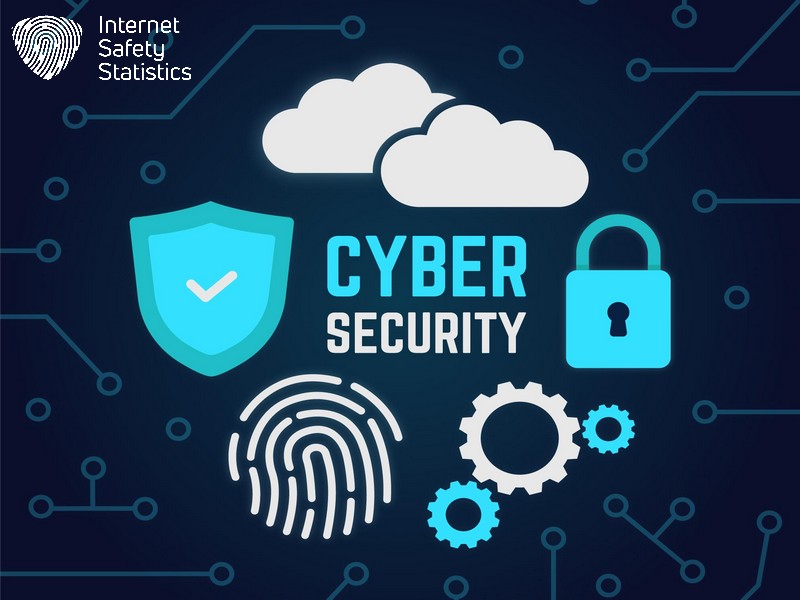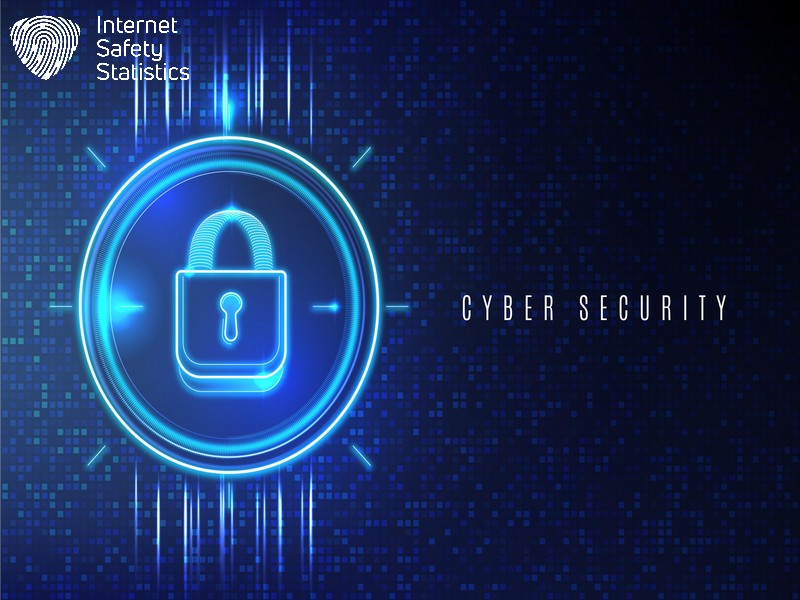
In a world where our lives are increasingly online, keeping safe from cyber threats is more important than ever. Cyber attacks have surged, changing how we protect ourselves and our information. The evolution of cyber threats puts the world at risk. We must all keep up with evolving trends, aspects and cybersecurity threats. This article will guide you through the past, present, and future of cyber dangers, offering insights into staying secure. Be ready to arm yourself with knowledge!
The Importance of Learning about Cyber Threats
By understanding how cyber threats have developed, we can continuously adapt our strategies and implement robust security measures to safeguard ourselves in the dynamic digital landscape. Hence, understanding the evolution of cyber threats is crucial for several reasons.
Proactive Defense
We can anticipate future tactics and strengthen our defences by learning how threats have transformed over time. We can identify patterns in attacker behaviour and implement preventative measures to address those vulnerabilities before they are exploited.
Staying Ahead of the Curve
Cybercriminals are constantly innovating. Studying past attacks helps us stay informed about the latest trends and adopt new security solutions accordingly. This knowledge allows us to be one step ahead of malicious actors.
Improved Resource Allocation
Recognising the most prevalent threats enables organisations and individuals to prioritise their cybersecurity investments. Resources can be focused on areas with the highest risk, ensuring the best possible protection.
Building a Culture of Security
Awareness of the evolving threat landscape fosters a culture of cybersecurity within organisations. Employees become more vigilant and can identify suspicious activity, reducing the chances of falling victim to attacks.
The Early Days of Cyber Threats
The CIA Triad marked the early days of cyber threats, focusing on confidentiality, integrity, and availability. Over time, cybersecurity has evolved to combat these threats.
The CIA Triad: Confidentiality, Integrity, and Availability
The CIA Triad refers to three fundamental principles in information security: Confidentiality, Integrity, and Availability. It serves as a foundational framework for ensuring the well-being of information systems and data. Understanding the CIA Triad is key to safeguarding our digital lives. Confidentiality ensures that personal information stays private, allowing access only to those who need it.
This principle is crucial for parents to keep family data safe and for office workers to protect business secrets. Integrity guards against unauthorised changes to your data. It’s like having a watchful eye, ensuring that no one alters your child’s medical records or company financials without permission.
Availability, often overlooked, guarantees that necessary information and systems are up and running when you need them. Imagine needing to pay bills online or accessing work files from home but finding the systems down — availability keeps these hiccups at bay. Cybersecurity evolution hinges on maintaining this trio, equipping us with a robust shield in an ever-connected world where cyber threats are becoming more advanced.
The Evolution of Cybersecurity
The evolution of cyber threats has prompted a rapid shift in the cybersecurity landscape, demanding proactive measures to protect from data breaches, malware, phishing, ransomware, and advanced persistent threats. Businesses worldwide have been significantly impacted by the progress and massive adoption of technology, which led to a significant evolution in cyber threats, necessitating robust security measures.
The future of cybersecurity is likely to be shaped by trends such as zero trust, AI technology, cloud technologies, increased investments in security technologies, and the continued threat of cyber-attacks. As businesses embrace digital transformation and connectivity becomes more prevalent, understanding the importance of physical security measures alongside holistic digital protection is paramount.
Organisations must invest in artificial intelligence-based solutions that effectively counter evolving threat vectors while focusing on global perspectives around third-party risks and emerging trends such as Cybercrime-as-a-Service (CaaS).
The Current State of Cybersecurity
Cyber threats are a significant issue, impacting countries and organisations worldwide. The ongoing conflict between Ukraine and Russia has also brought attention to the need for stronger cybersecurity measures, particularly for remote workers increasingly vulnerable to cyberattacks.
Cyber Threats That Remain an Issue
The current cybersecurity landscape faces persistent threats that continue to pose significant challenges. These threats impact businesses and individuals, underscoring the need for increased vigilance and robust protective measures.
- Ransomware Threats: Ransomware attacks have surged recently, targeting organisations of all sizes and industries.
- Global Cyberattacks: The frequency and impact of global cyberattacks have increased, highlighting the urgency for stronger security measures.
- Network Security Risks: The growing sophistication of cyber threats has amplified vulnerabilities in network security, necessitating proactive defensive strategies.
- Targeted Cyberattacks: Highly targeted cyberattacks have become more common, calling for enhanced protective measures to mitigate the risks.
Impact of the Ukraine-Russia Conflict
With cyber threats continuing to loom large, the impact of the Ukraine-Russia conflict introduces another layer of concern. This conflict has magnified the intensity and sophistication of cyber warfare tactics, causing ripple effects across global cybersecurity landscapes.
The escalating tensions have led to increased state-sponsored cyber espionage and disruptive attacks, impacting not only government institutions but also private businesses and individuals. As a result, it becomes imperative for all organisations and internet users to remain vigilant in implementing robust security measures to safeguard from potential cyber threats stemming from international conflicts.
Threats to Remote and Distracted Workers
- Increased Phishing Attacks: Remote workers are more susceptible to phishing attacks due to the lack of oversight and potential distractions at home. Cybercriminals take advantage of this vulnerability to obtain sensitive information.
- Unsecured Networks: Since remote workers can connect to unsecured Wi-Fi networks, this exposes their devices and data to potential cyber threats, leading to unauthorised access and data breaches.
- Device Security Risks: With the use of personal devices for work, there is a risk of implementing insufficient security measures on these devices, making them easy targets for cyber-attacks.
- Lack of IT Support: Remote workers may not have immediate access to IT support, leaving them vulnerable to a cyber incident or technical issue.
- Human Error: Distractions during remote work can lead to human errors such as clicking on suspicious links or downloading malicious attachments, putting the organisation’s data at risk.
- Personal Email Use: Using personal email accounts for work-related communication can expose sensitive company information if hackers compromise the personal account.
Cybersecurity for All Organisations

Cybersecurity is vital for all organisations, regardless of size or industry. As cyber threats evolve rapidly, businesses and individuals must prioritise protective measures to safeguard sensitive data and information. Investing in robust cybersecurity solutions, such as those offered by NordLayer, can help organisations avoid potential threats and ensure their digital assets’ confidentiality, integrity, and availability.
By actively addressing these security challenges and embracing proactive strategies, organisations can mitigate the risk of cyber-attacks in today’s increasingly connected world. The evolution of cyber threats has made cybersecurity an indispensable aspect for all organisations. Embracing a proactive approach with advanced security technologies is crucial in protecting against the growing threat landscape.
Highly Targeted Cyberattacks
Highly targeted cyber-attacks are a growing concern for both individuals and businesses. These sophisticated attacks focus on specific organisations or high-profile individuals, aiming to bypass traditional security measures. With advanced techniques such as social engineering and insider threats, highly targeted cyber-attacks can have a devastating impact, leading to data breaches and financial losses.
All internet users must stay vigilant and invest in robust cybersecurity solutions that offer comprehensive protection against these evolving threats. The future landscape of cybersecurity will likely witness an increase in highly targeted cyber-attacks, posing a significant risk to personal and organisational data. As artificial intelligence-based solutions evolve, cybercriminals adapt their tactics using AI-driven attacks to exploit network vulnerabilities.
What the Future Holds for Cyber Threats

Cyber threats constantly evolve, and the future holds new challenges and trends in the cybersecurity field. These threats include abusing open-source and legitimate tools, exploiting IoT devices, and focusing on social engineering techniques. The evolving shape of financial fraud and the difficulty in prosecuting cybercrime also pose significant cybersecurity concerns.
Abuse of Open-Source and Legitimate Tools
Cybercriminals are increasingly abusing open-source and legitimate tools to carry out malicious activities. This method allows them to avoid detection by security measures, making identifying and preventing cyber threats challenging.
By exploiting trusted software and resources, hackers can access sensitive information, compromise systems, and execute damaging attacks without raising suspicion. As a result, individuals and businesses must stay vigilant against potential misuse of common tools and maintain robust cybersecurity measures to safeguard their digital assets.
With the proliferation of open-source platforms and legitimate tools, internet users must understand the potential risks associated with these resources. Implementing comprehensive protection strategies is vital in countering cybercriminals’ abuse of open-source and legitimate tools.
Exploitation of IoT Devices
Cybercriminals exploit IoT devices, posing a significant threat to individuals and businesses. As the number of connected devices increases, so does the cyber-attack vulnerability. Users must realise the risks associated with IoT devices and take proactive measures to secure their smart home gadgets from potential exploitation by cybercriminals.
Businesses must also prioritise cybersecurity for all internet-connected devices within their network. With more companies integrating IoT technology into their operations, robust security measures are vital to safeguard against potential breaches or unauthorised access through exploited IoT devices.
Focus on Social Engineering Techniques
Cybercriminals employ various social engineering techniques to manipulate individuals into divulging sensitive information or taking unauthorised actions. These manipulative tactics often exploit human emotions, trust, and curiosity to gain access to valuable data or systems.
It is crucial for all internet users, including parents and office workers, to remain vigilant against such schemes by being mindful of unsolicited emails, suspicious links, and unexpected requests for personal information. Understanding the red flags associated with social engineering can help prevent these deceptive tactics.
The Changing Shape of Financial Fraud
Financial fraud is transforming as cybercriminals adapt to new technologies and avenues for exploitation. With the rise of digital transactions, online banking, and cryptocurrency, scams are diversifying. Fraudsters leverage advanced tactics like phishing emails, identity theft, and social engineering to target unsuspecting victims. The increasing use of open-source and legitimate tools in fraudulent activities has made identifying and prosecuting cybercrime perpetrators challenging.
As individuals and businesses navigate the evolving landscape of financial fraud, staying informed about emerging threats is crucial. It’s imperative to exercise caution when sharing personal or financial information online and remain vigilant against deceptive schemes to exploit vulnerabilities in modern payment systems.
Difficulty Prosecuting Cybercrime
Prosecuting cybercrime poses significant challenges due to the global nature of these offences. Jurisdictional issues often arise as criminals operate from different countries, making it difficult for law enforcement agencies to track and prosecute them effectively. Furthermore, sophisticated anonymising technologies and cryptocurrencies make tracing financial transactions arduous and identifying the individuals behind cyber-attacks.
Digital evidence collection and preservation complexity impeded securing convictions in cybercrime cases. Voluminous data must be carefully handled to maintain its integrity, making investigations time-consuming and resource-intensive.
Moreover, rapidly evolving technology outpaces legal frameworks, creating a gap that allows perpetrators to exploit vulnerabilities efficiently. As cyber threats evolve, addressing these challenges in prosecuting cybercrime will require international cooperation and concerted efforts across jurisdictions.
Emerging Trends in Cybersecurity
AI and automation are crucial in detecting and preventing cyber threats. Cybercrime-as-a-Service is making it easier for non-experts to launch attacks, and third-party risks are becoming more prevalent. The human element in cybersecurity cannot be overlooked as well.
AI and Automation in Cybersecurity
AI and automation have become vital tools in the fight against cyber threats. Artificial intelligence-based solutions are being employed to detect and respond to possible security breaches in real-time, helping organisations stay one step ahead of malicious actors.
These advanced technologies continuously evolve to analyse patterns, identify anomalies, and automate responses, enabling quicker detection and mitigation of cyber threats. As the future unfolds, embracing AI and automation will be essential for businesses and individuals to reinforce their cybersecurity defences against sophisticated attacks. Moving forward from AI-driven solutions, let’s explore the concept of Cybercrime-as-a-Service (CaaS) – an emerging trend that poses new challenges for cybersecurity professionals and individuals alike.
Cybercrime-as-a-Service (CaaS)
AI and automation present significant advancements in cybersecurity, but the looming threat of Cybercrime-as-a-Service (CaaS) is a growing concern. CaaS allows individuals with minimal technical skills to conduct cyber-attacks, accessing malicious tools and services through the dark web. This enables a broader range of individuals to perpetrate cybercrimes, making it essential for everyone to remain vigilant against potential threats.
The rise of platforms offering criminal services as a subscription-based model poses a severe risk to businesses and personal data security. Organisations and internet users must stay informed about these emerging tactics and implement robust cybersecurity measures to safeguard against this evolving threat landscape.
Third-Party Risks and Threats
As cybercrime trends evolve, it’s crucial to acknowledge the escalating concern over third-party risks and threats. Businesses and individuals must be aware of potential vulnerabilities introduced by external partners or service providers, which can lead to data breaches or security incidents.
The reliance on third-party vendors for various services opens the door to cyber threats, emphasising the need for stringent vetting processes and ongoing monitoring of these entities’ cybersecurity measures. The involvement of third parties introduces additional complexity to cybersecurity efforts, as their networks might not always adhere to the same rigorous security standards as internal systems do.
The Human Element in Cybersecurity
Transitioning from understanding third-party risks and threats to the human element in cybersecurity, it’s crucial to recognise that people play a significant role in safeguarding against cyber threats.
With the increasing reliance on technology, individuals across all walks of life need to be aware of their responsibilities in maintaining cybersecurity. Whether you’re a parent ensuring your family’s online safety, an office worker navigating potential security breaches at work, or an internet user managing your digital footprint, understanding the human aspect of cybersecurity is paramount.
As cybercrime continues to proliferate globally, it becomes imperative for individuals to remain vigilant and proactive in implementing security measures. Education about safe online practices and the potential risks associated with various digital activities is vital.
The future of cybersecurity is complex and ever-changing. New technologies bring opportunities and risks, making it integral for individuals and organisations to remain vigilant. AI-based solutions are poised to play a significant role in defending against emerging cyber threats. Still, human awareness and proactive measures will continue to be essential to effective cybersecurity strategies. As the digital landscape evolves, staying updated and adapting security practices will be key in safeguarding against potential cyber threats.
FAQs
1. What does the evolution of cyber threats mean for our future?
As cyber threats evolve, we may face more complex and intelligent risks with Artificial Intelligence-based solutions increasing both in defence and offence.
2. How can artificial intelligence help combat future cyber threats?
Artificial intelligence-based solutions can quickly analyse vast amounts of data to detect new threats, predict attacks, and strengthen defences against potential cybersecurity challenges.
3. Are there new types of cyber threats emerging?
Yes, as technology advances, so do the methods used by cybercriminals; expect to see more sophisticated tactics that could outpace traditional security measures.
4. Can everyday people protect themselves from these evolving cyber threats?
Absolutely! By staying informed about cybersecurity practices and using Artificial Intelligence-enhanced tools, individuals can better safeguard their personal information against future threats.
